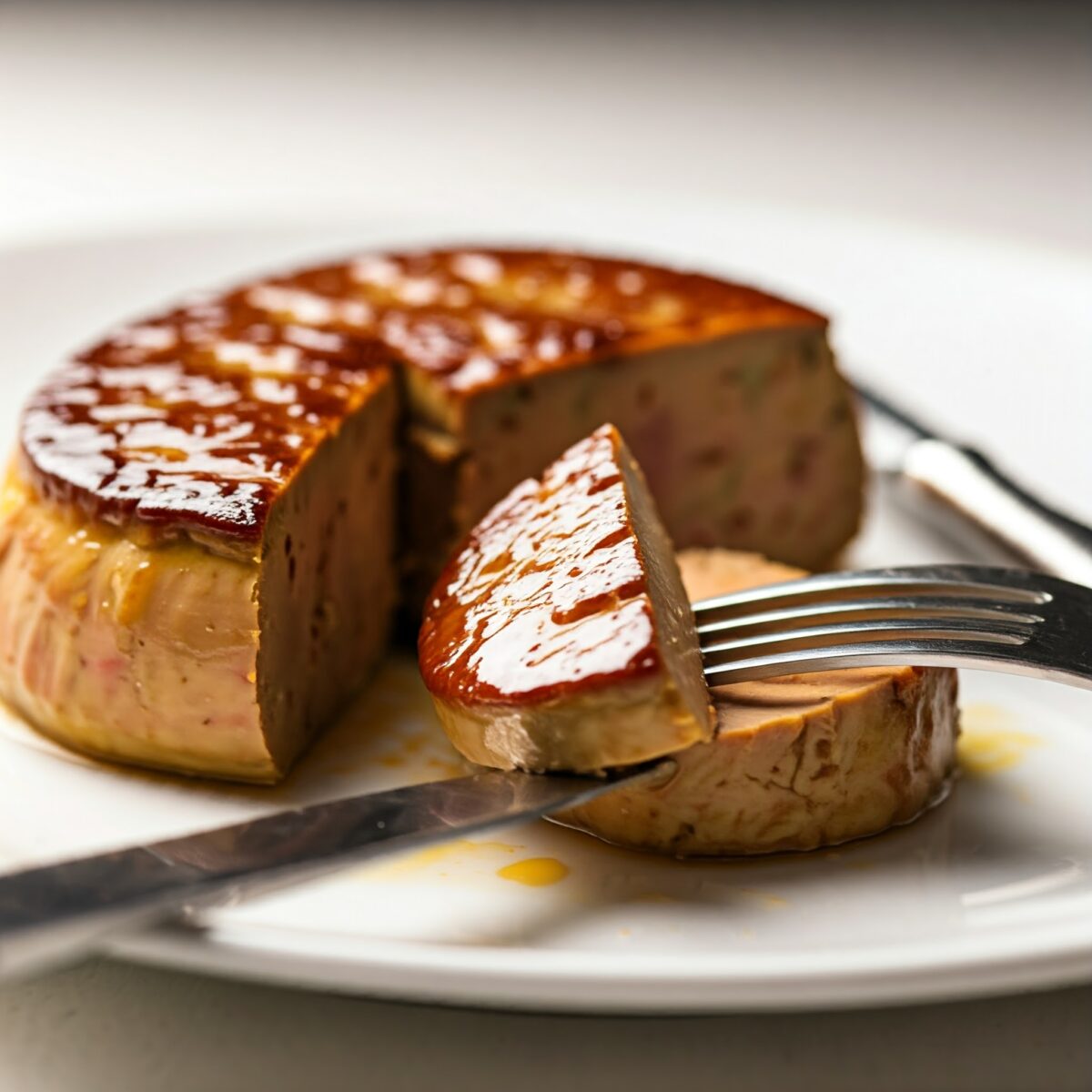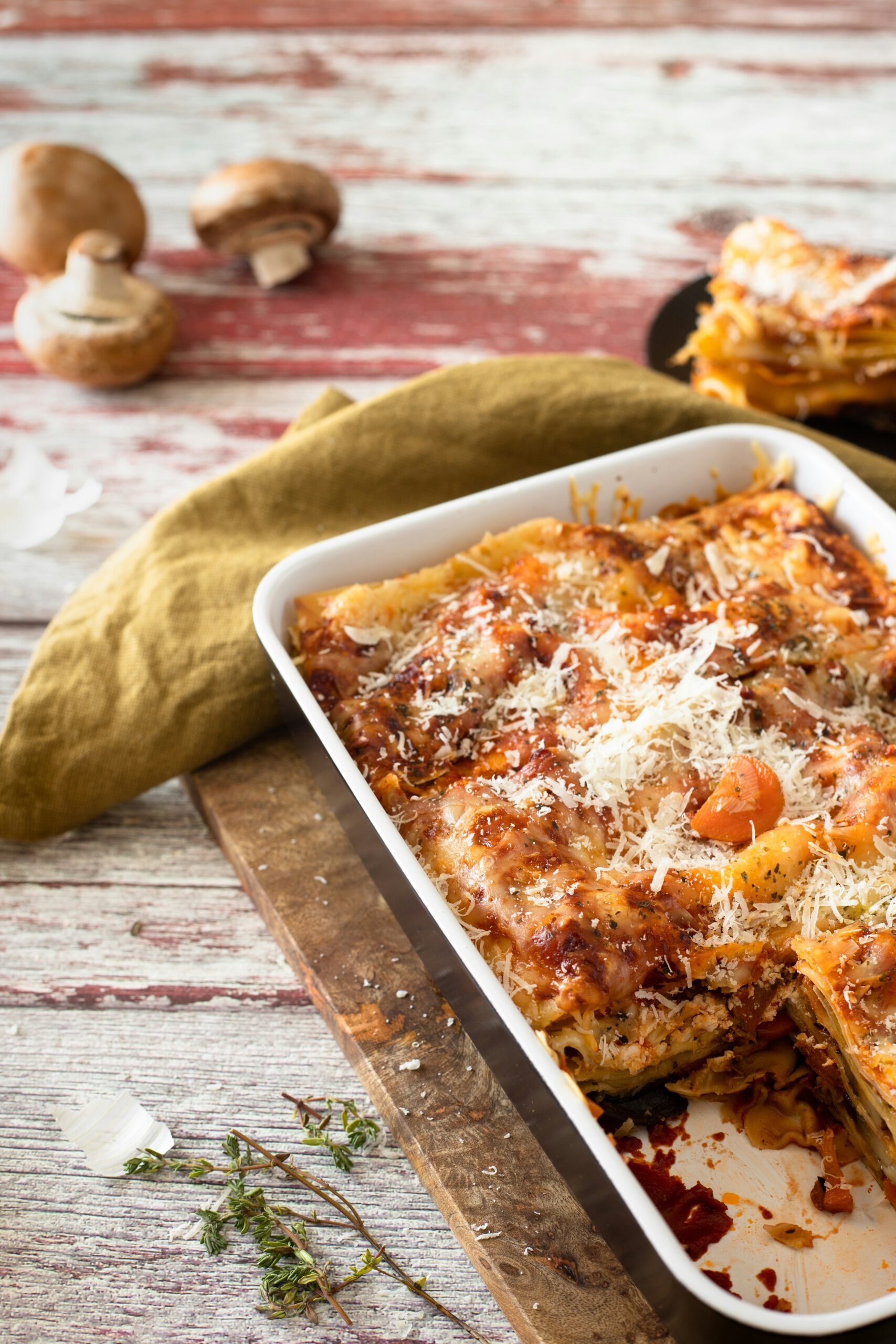Introduction to Foie Gras
Foie gras, a delicacy often associated with French cuisine, is a liver product derived from specially fattened ducks or geese. This luxurious dish has graced tables for centuries and is renowned for its rich, buttery flavor and smooth texture. The term “foie gras” translates to “fat liver” in English, which describes the result of a process called “gavage,” where the birds are specially fed to enhance the liver’s size and flavor. Historically, foie gras can be traced back to ancient Egyptian traditions and has evolved over time, becoming deeply embedded in the culinary culture of France.
The significance of foie gras within modern gastronomy cannot be overstated. It represents not only a unique dining experience but also the artistry behind French cooking. Elegant preparations such as terrines, pâtés, and mousse allow chefs to showcase the versatility of this exquisite ingredient. Foie gras is often served in fine dining establishments, highlighting its status as a symbol of haute cuisine. Furthermore, it was during the late 19th century that the widespread popularity of foie gras emerged in France, coinciding with the sophistication of French culinary techniques and the establishment of iconic French restaurants.
However, foie gras also exists within a controversial discourse, particularly regarding animal welfare. Critics challenge the ethics surrounding the production methods, raising concerns about the treatment of ducks and geese during the feeding process. As a result, foie gras has sparked debates in various countries regarding its acceptability and regulation. While some appreciate it as a culinary treasure, others advocate for alternative practices that prioritize animal welfare. These discussions reflect the complex relationship between tradition and modern ethical considerations in the realm of culinary arts.
The History and Tradition of Foie Gras in France
The origins of foie gras can be traced back to ancient Egypt, where the practice of fattening birds was established thousands of years ago. However, it was in southwestern France that the art of preparing foie gras truly flourished. The earliest documented reference to this delicacy in French cuisine dates back to the 13th century, when it became associated with the region of Gascony. It was in this picturesque area that local farmers began to experiment with the fattening of ducks, leading to the creation of the rich, buttery flavor that foie gras is known for today.
As history progressed, foie gras gained a reputation as an exquisite dish favored by the aristocracy. The French nobility, particularly during the reign of Louis XIV, embraced foie gras, incorporating it into lavish banquets and festivities. It became a symbol of luxury, sophistication, and culinary excellence. The preparation methods and recipes were perfected over time, ensuring that foie gras would remain an essential component of French gastronomy.
The introduction of foie gras to the global culinary scene can largely be attributed to France’s rich tradition of celebrating high-quality ingredients and technique. This appreciation extended beyond the French borders, as chefs worldwide began to experiment with foie gras, elevating it to an international delicacy. Nevertheless, the traditional French approach to preparing this dish—often involving meticulous sourcing of ducks and ethical fattening practices—remains unmatched. Yet, this culinary delight is not without its controversy; debates surrounding animal welfare have emerged, leading to discussions on the ethics of foie gras production. Amidst this discourse, the cultural significance it holds within French cuisine endures, demonstrating how foie gras is intertwined with the rich tapestry of France’s culinary history.
Production Process and Controversies Surrounding Foie Gras
Foie gras, a delicacy that has garnered both acclaim and controversy, is produced primarily in France, where the practice has been rooted in culinary tradition for centuries. The production process typically involves the feeding of ducks or geese through a method known as ‘gavage,’ where the birds are given a high-starch diet to induce the accumulation of fat in their livers. This process ultimately results in the rich, buttery flavor characteristic of foie gras. Traditional methods can involve handcrafted techniques in small farms, emphasizing a more humane treatment of the animals, while modern industrial approaches have raised significant animal welfare concerns.
Critics of foie gras production point toward the ethical implications of force-feeding, alleging that it constitutes cruelty toward the birds due to the stress and potential health issues it may cause. These concerns have prompted a range of public debates regarding the desirability of this practice. As awareness grows, some regions and countries have imposed bans on the production and sale of foie gras, citing animal welfare as a fundamental reason for such legislation. In contrast, proponents argue for the cultural importance of this culinary tradition, highlighting that when conducted responsibly in the France kitchen, it can align with ethical standards.
Furthermore, animal welfare advocates emphasize the need for transparency and improved practices within the foie gras industry to ensure the well-being of ducks and geese. Techniques such as pasture-raised systems and minimizing the duration of forced feeding have emerged as alternatives that seek to address ethical concerns while still producing this cherished delicacy. Balancing culinary passion with compassion for animals will be crucial as the debate surrounding foie gras continues, navigating the complexities inherent in the intersection of gastronomy and ethics.
Foie Gras Culinary Uses and Pairings
Foie gras is a luxurious delicacy that has long been a staple in French cuisine, showcasing its culinary versatility in a range of gourmet applications. Traditionally made from the liver of specially fattened ducks or geese, foie gras is celebrated not only for its rich and buttery flavor but also for its ability to enhance various dishes. Chefs around the world have embraced this ingredient, integrating it into appetizers, main courses, and even desserts, thereby expanding its appeal beyond traditional boundaries.
One classic way to enjoy foie gras is as a pâté, served on crusty bread or brioche, often accompanied by sweet or tart condiments like fig jam or balsamic reduction. This combination highlights the contrast between the richness of foie gras and the acidity of the accompaniments, creating a balanced dish. Another popular preparation is seared foie gras, where the liver is cooked briefly to achieve a caramelized exterior while maintaining its creamy interior. This dish pairs excellently with fruit compotes or sauces made from ingredients like apples or cherries, adding a vibrant contrast to the dish.
In summary, the exceptional qualities of foie gras allow it to shine in countless culinary contexts. Whether served as a sumptuous appetizer or an elegant main course, its ability to adapt to various pairings makes it a prized ingredient in any sophisticated France kitchen. Understanding how to best utilize and pair foie gras can elevate a dining experience, ensuring that it remains a cherished part of culinary traditions worldwide.

Foie Gras on the Global Stage: Popular Variations and Adaptations
Foie gras, a delicacy renowned for its rich flavor and buttery texture, originated in France and has since captured the palates of food enthusiasts worldwide. As this luxurious dish has traveled beyond its native borders, various cultures have embraced it, often leading to innovative preparations that reflect local tastes and culinary traditions. Each region offers a unique perspective on foie gras, effectively showcasing its versatility and significance in global gastronomy.
In Italy, for instance, fois gras is frequently incorporated into traditional antipasti platters, often paired with figs, balsamic vinegar, or delicious Italian breads. Chefs may also feature foie gras in gourmet pasta dishes, marrying its exquisite flavor with the region’s popular ingredients. This approach not only highlights the gastronomic merits of foie gras but also demonstrates the creative potential of pairing it with regional culinary staples.
Asian cuisine has also integrated foie gras, reinterpreting it in a variety of dishes. In Japan, for example, chefs have crafted sophisticated sushi rolls that incorporate foie gras, elevating it to a new level of culinary artistry. The pairing with soy and wasabi reflects a seamless blend of French and Japanese techniques. Similarly, in Hong Kong, restaurants have started to feature foie gras in traditional dim sum, offering a unique twist that appeals to both local diners and tourists alike.
Beyond these adaptations, the dialogue surrounding foie gras has prompted discussions about animal welfare, leading to increased interest in ethical sourcing and production practices. Amidst this discourse, culinary professionals are becoming more mindful of how foie gras is produced, encouraging responsible stewardship of ducks and their environments. As such discussions continue to evolve, the future of foie gras may involve the development of more sustainable options while maintaining the rich flavors that define this iconic dish.
In conclusion, as foie gras transcends geographic boundaries, it not only showcases the essence of French cuisine but also invites culinary creativity globally. Through diverse adaptations and innovations, this dish continues to inspire chefs and food lovers, making it a celebrated item on menus around the world.
Health and Ethical Considerations of Consuming Foie Gras
Foie gras, renowned for its rich flavor and luxurious texture, is made from the liver of ducks or geese that have been specially fattened. While it is a delicacy enjoyed by many, it has also become a focal point for health and ethical discussions. From a nutritional perspective, foie gras is high in fat and calories, which can contribute to dietary concerns if consumed excessively. It is particularly rich in monounsaturated fats, which may offer some cardiovascular benefits when included in moderation. Additionally, foie gras contains vitamins A and B12, further enhancing its nutritional profile. However, potential health risks, particularly associated with high cholesterol intake, should be considered by individuals with pre-existing health conditions.
Ethical sourcing of foie gras is a significant issue, particularly due to the methods used in its production. Traditional practices involve feeding ducks and geese a high-starch diet, sometimes through a process called “gavage,” where food is force-fed to increase liver size. This has raised serious animal welfare concerns and has led to strong opposition from various animal rights organizations. In response, some producers in France and beyond are exploring more humane methods that prioritize animal welfare while still supplying quality foie gras. These sustainable practices may include free-range feeding and a focus on the overall well-being of the animals, allowing them to live more natural lives. As a consumer, it is vital to seek products that emphasize ethical treatment and responsible sourcing.
In conclusion, while foie gras is celebrated for its unique taste and culinary versatility, it is essential to navigate the health implications and ethical dimensions associated with its production. Understanding the nutritional content and sourcing practices can guide consumers towards making informed choices that align with their health goals and ethical values.
Iconic Foie Gras Dishes from Around the World
Foie gras is not only a delicacy in France but has also made a significant impact on culinary traditions across the globe. This rich, buttery dish derived from the liver of ducks has fueled creativity among chefs from diverse cultures, who incorporate it into various iconic dishes that showcase its luxurious nature. In French cuisine, classic presentations include foie gras pâté, served with toasted brioche and sweet accompaniments such as fig jam or chutney. These pairings enhance the flavor profile, inviting diners to indulge in the harmonious blend of richness and sweetness.
In the United States, foie gras has also gained renown, particularly in high-end restaurants where it is often featured in gourmet burgers or as a topping for steak. Chefs use this versatile ingredient to impart a unique depth of flavor, creating dishes that resonate with culinary enthusiasts. Meanwhile, in countries like Hungary, a traditional dish known as ‘libamáj’ features foie gras sautéed with onions and served alongside hearty side dishes, exemplifying how this delicacy is woven into the fabric of local culinary traditions.
Furthermore, in Asian cuisines, especially in Japan, foie gras has found its way into sushi rolls and fusion dishes, where it harmonizes with ingredients like soy and rice vinegar. This innovative approach highlights the adaptability of foie gras, melding it seamlessly with flavors and techniques from different cultural backgrounds. As chefs worldwide embrace this celebrated ingredient, they reinforce its significance and cross-cultural appeal, emphasizing the need for responsible sourcing given pressing concerns surrounding animal welfare. The celebration of foie gras in various iconic dishes not only reflects its culinary prestige but also prompts an ongoing dialogue about ethical considerations in sourcing ducks while maintaining the distinctiveness of this cherished fare.
The Future of Foie Gras: Trends and Sustainability Efforts
As the culinary world continues to evolve, the consumption of foie gras is undergoing significant transformation in response to changing consumer preferences and increasing scrutiny regarding animal welfare. Traditional methods of foie gras production in France, primarily involving ducks and geese, face challenges from both ethical perspectives and the rise of the plant-based movement. Consumers are becoming more conscientious about the sourcing of their food, leading to a heightened demand for transparency in production practices.
In recent years, several French producers have started to embrace sustainable practices. These initiatives often focus on improving the living conditions of ducks and minimizing environmental impacts. Some farms are experimenting with free-range methods, allowing ducks to roam in a natural setting, which not only aligns with animal welfare concerns but also enhances the quality of the foie gras. This approach promotes a more humane treatment of animals and is resonating with a growing segment of consumers who prioritize ethical products.
Moreover, under the influence of a global shift toward sustainable food practices, there has been an increased interest in alternative methods of foie gras production that reduce or eliminate the controversial feeding techniques traditionally associated with this delicacy. Some innovative chefs and food artisans are exploring the use of old-world techniques, focusing on breeding and raising ducks in ways that minimize stress and ensure their well-being while still producing high-quality foie gras.
The industry also sees the emergence of foie gras as a sought-after culinary experience in gastronomic tourism, where visitors actively seek out farm tours and tastings that highlight responsible production methods. This shift in consumer behavior, along with sustainable practices adopted by producers, indicates a promising trajectory for foie gras within the realms of the France kitchen and the global culinary landscape. As the industry evolves, it may find a harmonious balance between tradition, taste, and respect for animal welfare.
FAQ about Foie Gras
1. What is foie gras?
Foie gras is a French delicacy made from the liver of a duck or goose that has been fattened, typically through a process called gavage (force-feeding). The name translates to “fat liver” in English.
2. How is foie gras produced?
Foie gras is traditionally made by feeding ducks or geese a high-starch diet to enlarge their livers. The feeding process takes place over several weeks and involves carefully controlled portions to achieve the desired texture and flavor.
3. What does foie gras taste like?
Foie gras has a rich, buttery, and delicate flavor. Its texture is smooth and creamy, often described as luxurious and velvety.
4. Is foie gras controversial?
Yes, the production of foie gras is controversial. Critics argue that force-feeding animals is inhumane and raises ethical concerns, while proponents maintain that the process is humane when done properly and part of traditional culinary heritage.



